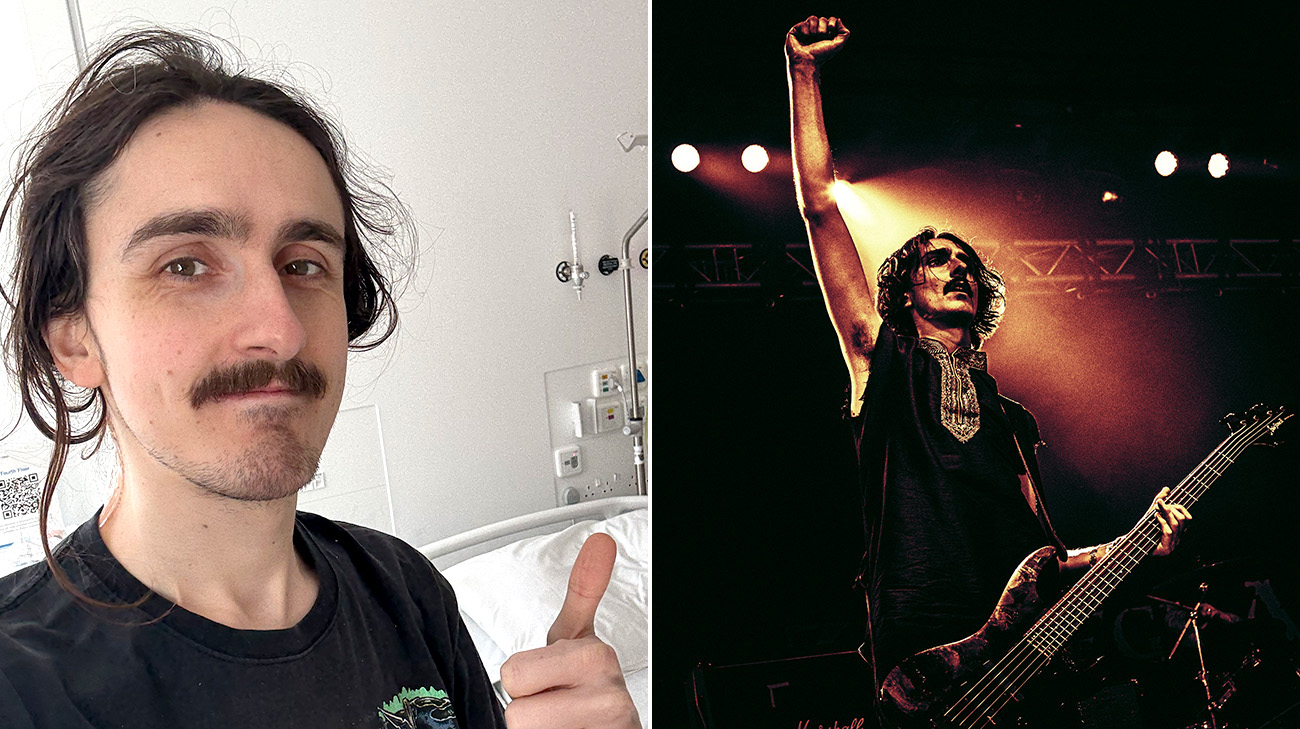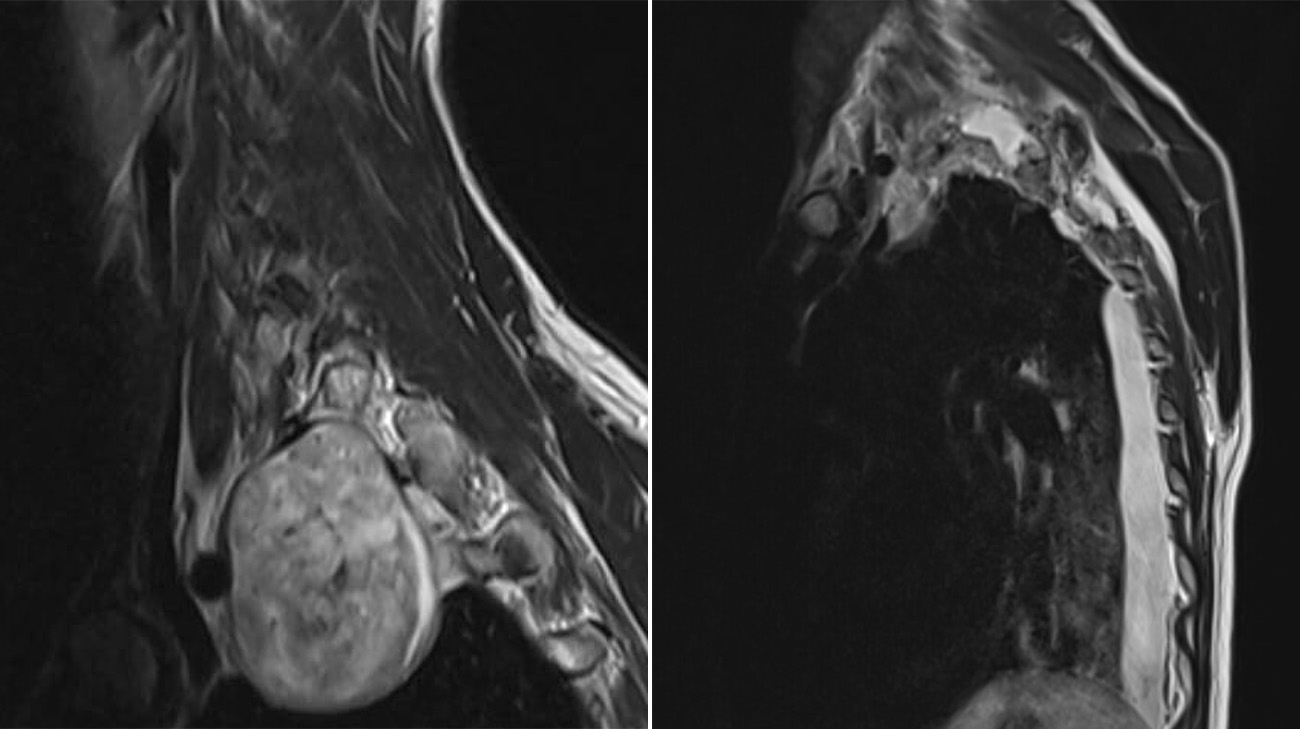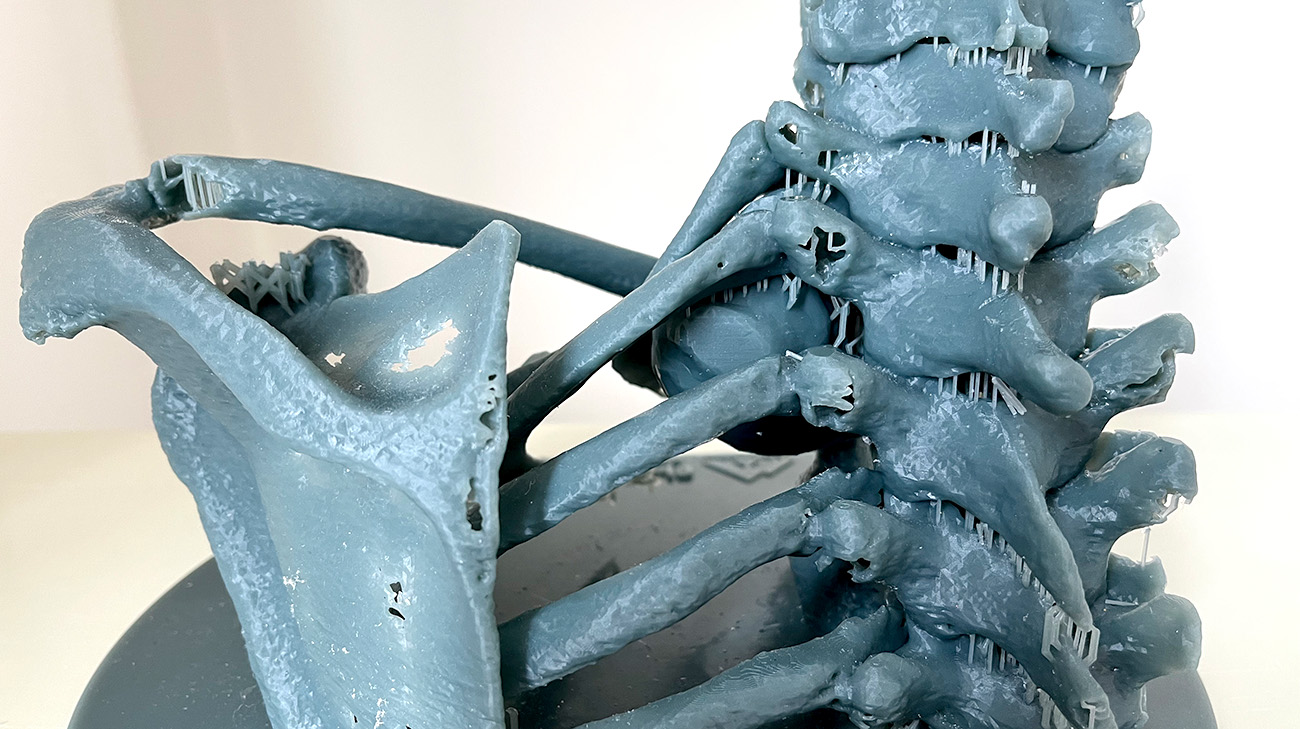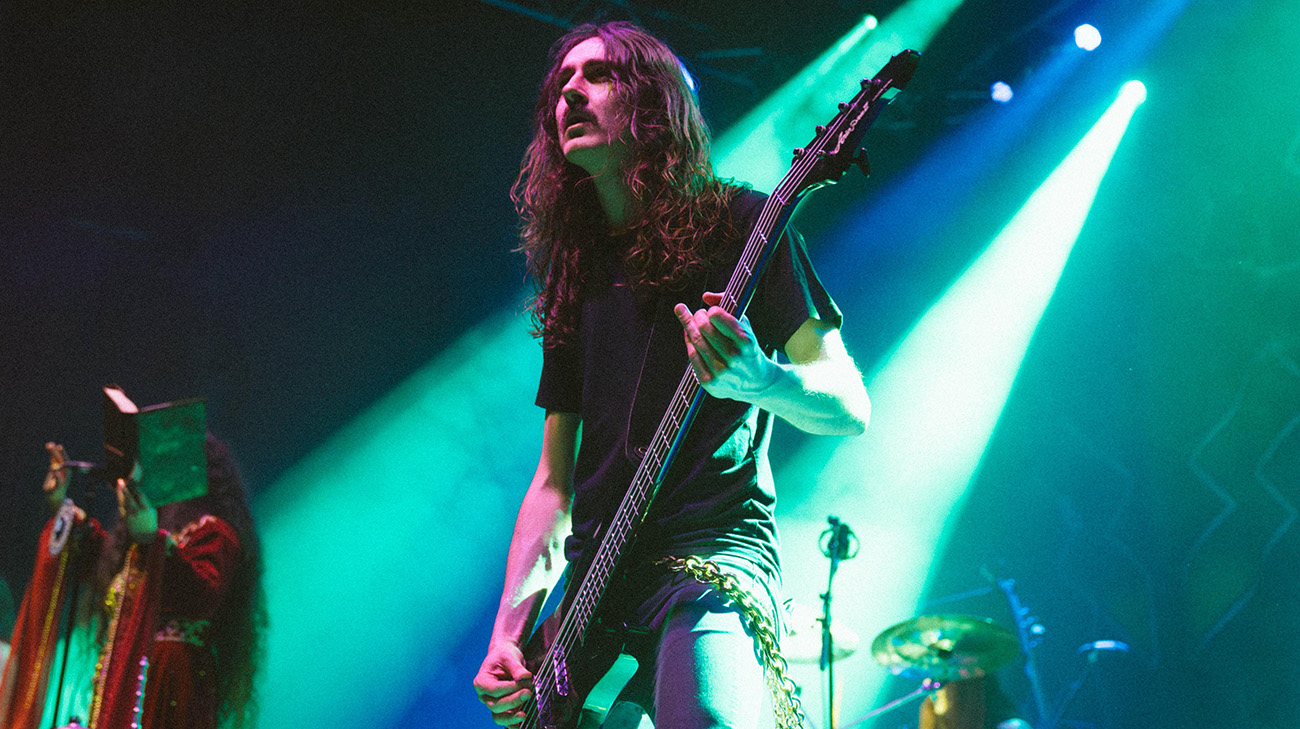
When Alex Clarke steps onto the stage, guitar in hand, it’s hard to imagine he recently underwent complex surgery to remove a tumour that threatened not just his health – but his ability to play music. Now 33, the London-based musician’s passion for music is what ultimately led to the discovery of the tumour.
“I was at a concert, and as a lot of more lively shows do, the crowd got a bit wild – someone came flying into me at high speed. I was still hurting a couple days later, so I got it checked out to make sure I hadn’t broken a rib. I got an X-ray and found out my ribs were fine, but they saw a shadow,” says Alex.
Further testing revealed it was a nerve sheath tumour, a growth that develops in the surrounding tissues and supporting nerve cells. In Alex’s case, it was a giant schwannoma. This rare tumour had grown mostly outside his spine into the tight crossroads between the neck, the lung, and the large blood vessels leading to the heart – an area sometimes referred to as “no man’s land” because it does not fall neatly into the domain of a single medical specialty.

Scans show Alex’s tumour before (left) and after (right) it was removed. (Courtesy: Cleveland Clinic)
“I couldn't feel the tumour at all. I had no symptoms whatsoever. And at this time, we didn't know how fast it was growing or if it posed much of a danger, so the plan from that point was to monitor it,” says Alex.
But after receiving the diagnosis in June 2023, a scan one year later showed the tumour had grown by at least 10%.
“The tumour was growing on a nerve from my spine that controls the gripping motion of my left hand. Among other issues, it could have pushed harder on this nerve, impacting the function and feeling in my left arm. Being a fairly keen, fairly busy musician, I need my left hand to work in the field, so I couldn’t let that happen,” says Alex.
Alex explored different options from physicians who recommended the tumour be surgically removed. He knew this would be a major operation and decided to get a second opinion at Cleveland Clinic London.
“These tumours are rare and challenging to navigate through the anatomy,” explains Cleveland Clinic London spinal neurosurgeon Mr George Prezerakos, MD, PhD, who has published research on advanced techniques for removing them. “The structures around the tumour are densely packed and critical, so every move must be precise.”

A 3D-printed model of the tumour and surrounding anatomy was used to prepare for Alex’s surgery. (Courtesy: Cleveland Clinic)
To prepare, Mr Prezerakos collaborated with thoracic surgeon Mr Nikolaos Panagiotopoulos and vascular surgeon Professor Richard Gibbs. Together, they used advanced imaging and worked together to map out the most effective surgical approval. This included collaborating with University College London to produce a detailed 3D-printed model of the tumour and surrounding anatomy.
“The model was incredibly useful,” says Mr Prezerakos. “It allowed us to visualise the exact relationships between the tumour, the nerves, the lung, and the major blood vessels. In a space this confined, you have no margin for error.”
During the surgery in April 2025, first Mr Prezerakos carefully detached the tumour from the spinal cord and its nerves, ensuring Alex’s left-hand function was preserved. He then reinforced the spine with metal implants to maintain stability. With that stage complete, he and Mr Panagiotopoulos moved to the next phase: a chest wall opening, using a camera in the chest to navigate the lung structures and the narrow junction where the neck meets the chest cavity.
At the most critical point – when the tumour was being separated from the large blood vessels leading to the heart – Professor Gibbs stepped in to support them and ensure the vessels remained safe.
After hours of intricate work, the team removed the tumour in one piece.
When Alex woke up, he checked his left hand. “The first thing I did was look at my hand to see if I could still move it and I could. That was my biggest worry, and there was no damage whatsoever. I’m extraordinarily grateful,” he says.

Following his procedure, Alex continues doing what he loves: performing. (Courtesy: Stu Garneys)
Although he experienced expected fatigue and minor pain, Alex made a quick recovery. Within a couple months, Alex was back to rehearsing and, before long, performing live again. “I’m already back to playing in four bands. I can play exactly how I used to before,” he says.
For Mr Prezerakos, a blues guitarist himself, seeing Alex return to the stage was especially rewarding. “This tumour wasn’t cancerous, but it was growing and had reached a point where it could have compressed the lung, heart vessels, and spinal cord. The timing of the operation was crucial.”
Alex says, “I went from having no symptoms to being cured of something that could have gone terribly wrong. I can’t ask for anything more.”
Related Institutes: Neurological InstitutePatient Stories
Perseverance and Focus Help Ovarian Cancer Survivor Beat the Odds HIPEC During Surgery Helps Keep Disease Under Control
Dec 10, 2025
Boy With Advanced Liver Cancer Thriving After Lifesaving Living Organ Donation From Aunt
Dec 8, 2025
Against All Odds A Journey of Recovery After Stroke
Dec 5, 2025
“Dr. Pervez is absolutely incredible, I can’t say enough about him and the speech therapy department. And Cleveland Clinic is phenomenal. They’ve always been wonderful, and I recommend them to everyone I talk to.”


